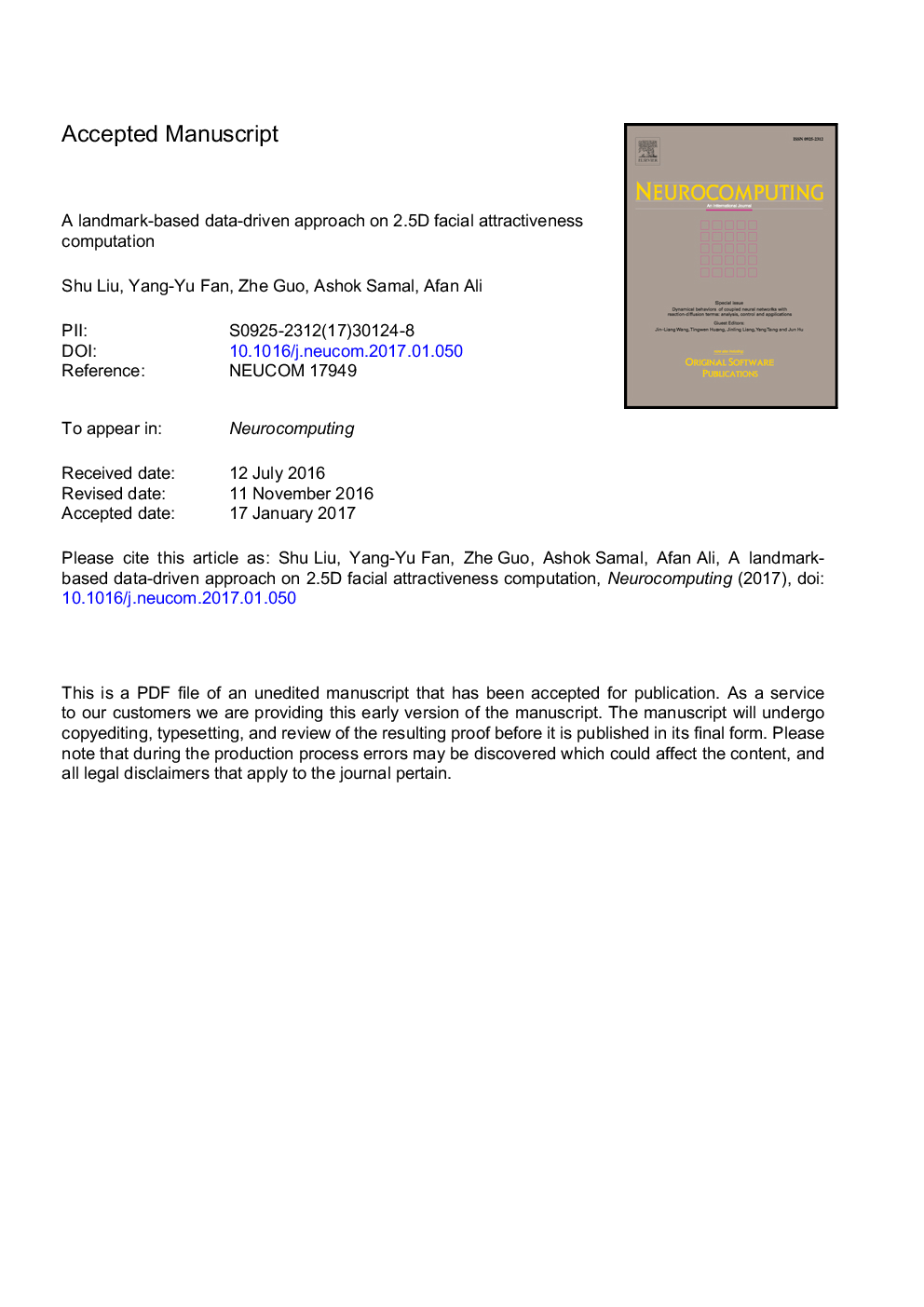| Article ID | Journal | Published Year | Pages | File Type |
|---|---|---|---|---|
| 4947616 | Neurocomputing | 2017 | 32 Pages |
Abstract
Investigating the nature and components of face attractiveness from a computational view has become an emerging topic in facial analysis research. In this paper, a multi-view (frontal and profile view, 2.5D) facial attractiveness computational model is developed to explore how face geometry affects its attractiveness. A landmark-based, data-driven method is introduced to construct a huge dimension of three kinds of geometric facial measurements, including ratios, angles, and inclinations. An incremental feature selection algorithm is proposed to systematically select the most discriminative subset of geometric features, which are finally mapped to an attractiveness score through the application of support vector regression (SVR). On a dataset of 360 facial images pre-processed from BJUT-3D Face Database and an attractiveness score dataset collected from human raters, we show that the computational model performs well with low statistic error (MSE=0.4969) and good predictability (R2=0.5756).
Keywords
Related Topics
Physical Sciences and Engineering
Computer Science
Artificial Intelligence
Authors
Shu Liu, Yang-Yu Fan, Zhe Guo, Ashok Samal, Afan Ali,
